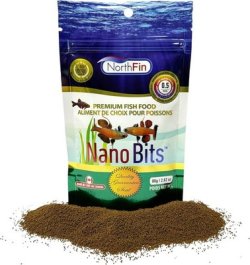Basically if it grows on land, fish can't digest it that well and terrestrial plants are generally a gimmick.
I do not agree with the above.
Dr. Stephan Tanner formulated a fruit based food for Repashy, it is called Igapo Explorer. This was the second name as it began life as Fruut Luups. My clown loaches shred this food before it can bhit thwe bottom.
Our formula for all Rainforest Species. Contains Invertebrates, Nuts, Fruits, Seeds, Legumes, Herbs and Greens.
INGREDIENTS: Black Soldier Fly Larvae Meal, Krill Meal, Banana Powder, Squid Meal, Mango Powder, Pea Flour, Mulberry Fruit Powder, Dandelion Powder, Seaweed Flour, Almond Flour, Coconut Flour, Ground Flax Seed, Alfalfa Meal, Locust Bean Gum, Citric Acid, Lecithin, Stinging Nettle, Garlic, Ginger, Cinnamon, Phaffia Yeast, Dried Watermelon, Rosehips, Hibiscus Flower, Marigold Flower, Calendula Flower, Paprika, Turmeric, Dried Kelp, Calcium Propionate and Potassium Sorbate (as preservatives), Magnesium Amino Acid Chelate, Zinc Methionine Hydroxy Analogue Chelate, Manganese Methionine Hydroxy Analogue Chelate, Copper Methionine Hydroxy Analogue Chelate. Vitamins: (Vitamin A Supplement, Vitamin D3 Supplement, Calcium L-Ascorbyl-2-Monophosphate, Vitamin E Supplement, Niacin, Beta Carotene, d-Calcium Pantothenate, Riboflavin, Pyridoxine Hydrochloride, Thiamine Mononitrate, Folic Acid, Biotin, Vitamin B12 Supplement, Menadione Sodium Bisulfite Complex).
Sabino, J. and Sazima, I., 1999. Association between fruit-eating fish and foraging monkeys in western Brazil.
Ichthyological Exploration of Freshwaters,
10(4), pp.309-312.
Full paper here:
http://www.eventus.com.br/atbc2012/Fish&monkeys.pdf
Correa, S.B., Costa‐Pereira, R., Fleming, T., Goulding, M. and Anderson, J.T., 2015. Neotropical fish–fruit interactions: eco‐evolutionary dynamics and conservation.
Biological Reviews,
90(4), pp.1263-1278.
ABSTRACT
Frugivorous fish play a prominent role in seed dispersal and reproductive dynamics of plant communities in riparian and floodplain habitats of tropical regions worldwide. In Neotropical wetlands, many plant species have fleshy fruits and synchronize their fruiting with the flood season, when fruit-eating fish forage in forest and savannahs for periods of up to 7 months. We conducted a comprehensive analysis to examine the evolutionary origin of fish–fruit interactions, describe fruit traits associated with seed dispersal and seed predation, and assess the influence of fish size on the effectiveness of seed dispersal by fish (ichthyochory). To date, 62 studies have documented 566 species of fruits and seeds from 82 plant families in the diets of 69 Neotropical fish species. Fish interactions with flowering plants are likely to be as old as 70 million years in the Neotropics, pre-dating most modern bird–fruit and mammal–fruit interactions, and contributing to long-distance seed dispersal and possibly the radiation of early angiosperms. Ichthyochory occurs across the angiosperm phylogeny, and is more frequent among advanced eudicots. Numerous fish species are capable of dispersing small seeds, but only a limited number of species can disperse large seeds. The size of dispersed seeds and the probability of seed dispersal both increase with fish size. Large-bodied species are the most effective seed dispersal agents and remain the primary target of fishing activities in the Neotropics. Thus, conservation efforts should focus on these species to ensure continuity of plant recruitment dynamics and maintenance of plant diversity in riparian and floodplain ecosystems.
full paper here:
https://www.researchgate.net/profil...co-evolutionary-dynamics-and-conservation.pdf
(edited to change fruut Loops to its proper name, Fruut Luups)

